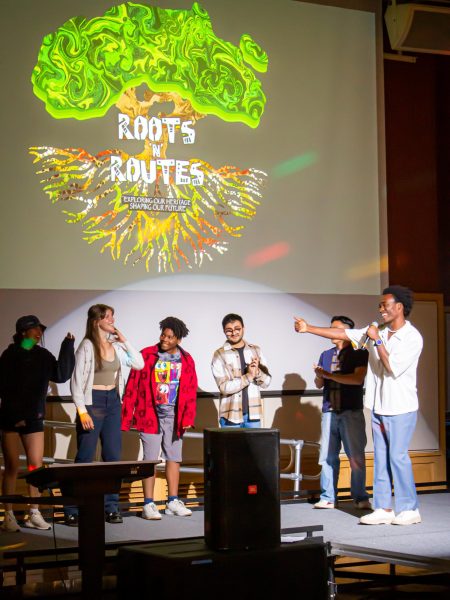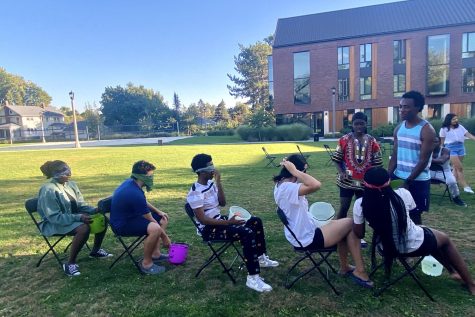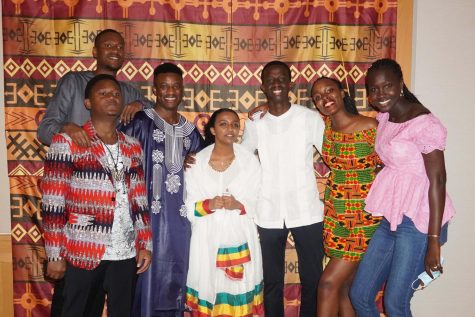A history of student activism for racial justice on campus
September 24, 2020
There has been an increased spotlight on contemporary issues of racial discrimination at Whitman, but current activists argue that we must not forget the legacy of unacknowledged work and demands of BIPOC leaders past.
On July 20, 2020, the Whitman Black Student Union President Hannah Paul ‘22* and Vice President Aliyah Fard ‘22, among others, released Results May Vary. The online zine brought to light the 1970 demands from the BSU, detailing the changes yet to come in the 50 years since their publication.
The document culminated in a reiteration of modern demands from the BSU and WASA, the Whitman African Student Association. It was self-published on Issuu.com and widely shared by students on social media through the BSU/WASA Instagram page. Later, it was published as an OP-ED to the Wire.
Earlier in the summer, on June 8, President Murray had announced the creation of the Whitman Inclusion Task Force, following an email she sent on May 30 expressing grief at the passing of George Floyd and solidarity with BIPOC members of the Whitman community.
The first page of “Results May Vary” critiques the creation of the Whitman Inclusion Task Force, noting that it is the third time in six years that Whitman College has formed a task force aimed at addressing and working to prevent racism on campus.
“Results May Vary” also names the inadequacy and performative nature of the task force, going on to say that the task force relies on labor from BIPOC students who have already created documents, held meetings and circulated emails, which have gone largely ignored.
“I’m not gonna just praise [admin] for creating an email,” Paul said.
The task force has released an action plan for the following years that includes recruitment goals for the increase of Black students, dedicated anti-racist workshops, and the development of a Black Studies Program.
“I am very proud of the work done by the Inclusion Task Force this summer,” President Murray said in an email to The Wire. “I believe these are the next right steps for the college to take. They aren’t the only steps, and they certainly aren’t the final steps.”
“The Whitman administration has decided to take steps and listen to students; however, this is not enough,” Fard and Paul write. “The task force does not target the root of systemic issues that manifest at Whitman College.”
Timeline of publications
In 2016, the Indigenous Peoples Education and Culture Club (IPECC) published a petition to change the Whitman mascot from The Missionaries as well as implement a stronger education on the colonialist history of the Whitmans. They released a supplementary pamphlet that is now available by request from the Penrose Archives called “A Decolonial History of Whitman College.” The Wire has previously reported on these events.
“The continued existence of various markers and monuments, such as the college seal, the Marcus Whitman statue, Treaty Rock, and, until recently, the mascot and name of the newspaper, perpetuates the impression that this mythical tale represents the college well, instead of being a story told to excuse a brutal local history of racial violence,” the pamphlet said.
The statue has been a continuous source of contention and is periodically the focal point of student protests, graffiti and performance art.
In 2018, Devon Yee ‘18 published A Brief & Incomplete Recent History of Racism & Activism at Whitman as a means of presenting a catalog of racist incidents and student activism at Whitman from the 1980s to 2018. The zine details incidents of racial profiling, blackface, and the birth of the Power and Privilege Symposium, which Yee expresses a need for faculty and administration to become more involved with to alleviate the pressure put on students to run and maintain the Symposium.
“Through writing this history, it has become clear to me that student organizing drives change at Whitman,” Yee wrote.
In 2019, women faculty of color published We Need To Thrive: A Manifesta. This Manifesta, signed by Dalia Biswas, Shampa Biswas, Leena Knight, Nicole Pietrantoni, Elyse Semerdjian, Yukiko Shigeto, Lisa Uddin, Jacqueline Woodfork and Wenqing Zhao, outlines the particular failures of Whitman College to combat the challenges that BIWOC (Black, Indigenous, Women Of Color) faculty face at this predominantly white institution.
On April 9, 2020, Whitman Admin, Do We Have Your Attention Now? was published on Issuu. This document contains various email threads chronicling the lack of urgency around incidents of racism on campus, including violence and slurs used by campus visitors.
On April 18, 2020, a group known as E.I.D.I.A.B. Press published For the Record: Official Internal Review of the 2019 Power & Privilege Symposium, exposing the toxic culture of the Symposium. The zine was spread around campus as a physical copy and was also published on Issuu. A major theme of the zine is the lack of adequate compensation for the labor that goes into working on the Symposium. When Megan Waldau ‘20 resigned from her position as Executive Director due to the hostile environment, she only received half of her contractual salary, despite the expected number of hours never being made explicit in her contract.
Waldau’s website, nomoredigitalhoarding, contains more documents and personal experiences of her time at Whitman.
Summer 2020 was full of increased student engagement in social issues both on and off-campus.
On July 13, 2020, students Jasmine Razeghi and Elea Besse released the first episode of their weekly podcast Whitman So White, during which they interview students of color about their experiences on campus. This student-made production places focus on giving a safe space for students of color to talk about issues of racism on campus. The Wire has previously reported on this.
On July 20, 2020, “Results May Vary” was released. It prompted several acts of student support, an email campaign started by student Katy Laliotis, which allowed students to customize an email template, with “For The Record” and “Whitman Admin, Do We Have Your Attention Now?” attached, urging President Murray to address racism on campus, as well as fundraisers held by multiple student organizations over social media for various social justice issues.
Also on July 20, student Em Perry sent an OP-ED to the student and community listservs, calling Whitman a “dead zone for institutional growth and accountability.”
“In my experience, I would say Whitman doesn’t bury demands so much as ignore them through performative action,” Perry said.
On July 31, 2020, the Whitman Drama Club Officers released a document with their own demands for the theater department. Demands echoed similar issues of visiting performers and professors of color who felt under-compensated and unwelcome on campus. BIPOC students shared personal letters in the drama department in emails sent out to the drama listserv on Aug. 29, resulting in the cancellation of the Fall season to avoid replicating the issues brought to light.
Accessibility and Institutional Memory
Paul found the 1970s BSU demands to be difficult to access and was ultimately only to get a hold of them because they were sent to her by an alum.
“[They] were not easy to get a hold of at all,” Paul said.
Paul attributes this to an aversion of record-keeping.
“Whitman doesn’t like keeping institutional memories, especially those which paint Whitman to be in a negative light,” Paul said.
Many students, including Paul, expressed suspicion at the way copies of “For the Record,” the student zine reviewing problems with the 2019 Power & Privilege Symposium, seemed to disappear when they were first spread around campus. The physical issue was difficult to track down despite students’ heightened interest, which prompted the wide-spread sharing of the digital issue.
Ben Murphy, an archivist and head of digital services for the Penrose Archives, noted the role the archives play in keeping student activism accessible for years to come.
“The Archives strives to preserve many aspects of student life and culture, and student publications are an important piece of that. This includes recurring publications like The Wire, but also DIY zines and other publications that document student activism. These documents shed light on the students’ experiences — and their work and advocacy — that are usually not documented elsewhere,” Murphy said.
However, the ability to catalog all student-made documents is contingent on participation from the creators.
“We collect what we can, what is widely disseminated, or what we hear about, but we need students to bring us other materials,” Murphy said.
While the Archives were not used to create “Results May Vary,” Paul did cite Murphy as a help after the fact.
“He gave us so many documents — this was after “Results May Vary” — and a very thorough list of lots and lots of documents of the BSU that he found for us… I was pleasantly surprised that he gave us so many resources,” Paul said.
Paul noted that the collective memory of these issues seemed to fade quickly.
“People need to continue having momentum for these causes and not just forget about them,” Paul said. “People just need to listen to BIPOC voices and realize that we’re not just complaining because it’s fun. If anything, it’s not fun… You do it because you want the environment to be better.”
*Paul is the Illustration Editor of The Wire.








